Hypermiling in practice: how to save fuel?
Hypermiling: what it is and how it can help save fuel in the car.
Have you heard of the concept of EcoDrive? This kind of driving is very popular in Europe. But we do it not so familiar. This is not surprising, since a long time in our country was a very cheap fuel compared to fuel prices in EU countries. EcoDrive is a set of rules for ordinary driving, which leads to savings in fuel consumption. The Americans went even further, inventing hypermiling. Unlike EcoDrive hypermiling requires much more effort from the driver, but leads to higher fuel economy.
The difference in consumption can reach up to 2 liters of gasoline or diesel fuel per 100 kilometers. Unfortunately, in our country the issue of fuel economy has also become concerned about the millions of motorists after a surge in prices in early 2018. So we decided to collect for you the best tips to reduce fuel consumption. But to get a decent economy, each driver must prepare. Here’s what you should do:
1. First of all, tires
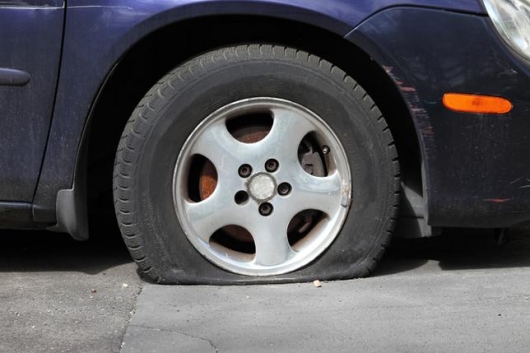
The first preparations for hypermiling usually take place before the trip. The key to maximum fuel economy, of course, is the wheels of your vehicle. First, the car was as lean as possible, it is necessary that the wheels have the correct angle of installation (alignment). That’s why periodically, all car owners have to do the check of corners of installation of wheels and if necessary adjust them in the technical center. The same applies to tyre pressure, which many motorists are too lazy to check, despite the fact that it does not take much time.
But that’s not all. Usually for fuel economy in Europe is recommended to keep the tire pressure recommended by the carmaker (tips EcoDrive). Americans in the preparation of the car to hypermiling suggest (you would not believe) to increase the pressure in the tires recommended by the automaker by about 20 percent. Yes, according to experts, increase the tire pressure (slightly) leads to a decrease in fuel consumption. Attention! Large values of tire pressure can present a danger.
Therefore, even slightly increasing the tyre pressure, you need to carefully monitor the behavior of the car on the road. However, there is in this Council another disadvantage is the rapid wear of the tires. But hypermiling usually recommend to do periodically, for example before a long travel.
2. Bike and roof rack – the main enemy of fuel economy
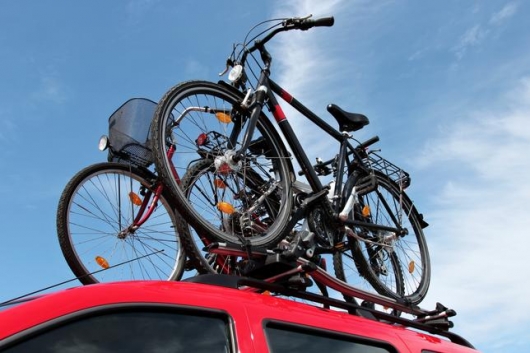
Any cargo on the roof of the car is the main opponent for hypermiling. If you want to reduce fuel consumption, you should think about moving Luggage from the roof of the car to the salon. In General, fuel economy is useless to think about reducing the quantity of the goods (bags, suitcases, packages, etc.). If you think that the light box on the roof will do nothing, you are mistaken.
Removing one light box, you will reduce fuel consumption by 5 percent. You will not believe, but even an empty roof rack is a common culprit for high fuel consumption (especially when driving on the highway at speed). Removing the trunk, you’ll reduce fuel consumption of your car.
In particular, this applies to bicycles, which are often transported on the roof. Removing them in the back of the machine, you does not save. Even folded bikes in the car, you slightly reduce the consumption, as the bikes add weight to your car. If you go on vacation, then it might be better to take the bikes than to drag them along?
3. Air conditioning and cooling
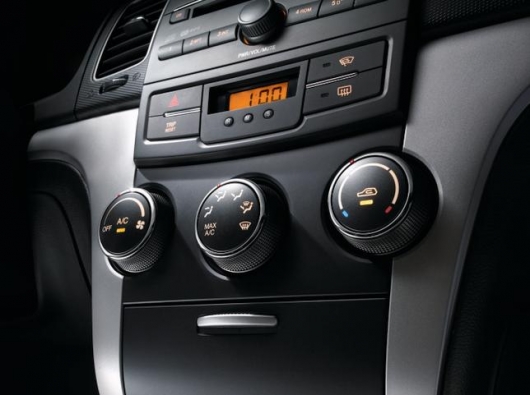
One of the most power hungry items in the car is the air conditioning. Of course, it’s hard to imagine a ride in hot days without using it. But if for you the main thing – to save fuel without turning it off you can not do. Before you go, close the shutters on the roof (if the car has a glass roof) and the window of the car and turn the air conditioner. Also, enable internal air recirculation in the cabin, so the air conditioner does not have to constantly cooling the hot air supplied into the cabin from the outside.
Do not place extremely low temperature for cooling in the cabin. Remember that the greater the difference between the temperature of cooling and the temperature outside, the more fuel will be consumed by your car. Also do not forget that low temperature cooling lead to cold. Keep the difference between the outside temperature and the interior temperature is not more than 4-5 degrees. If the street is unbearable heat, do not turn off the air conditioner when the interior has cooled to a comfortable temperature.
Hit the road with the included re-circulating the air in the cabin, periodically turning it off to drive in the car portion of the air from the street. In this case, in the car, of course, for a while will start to increase temperature. But the AC will do the job fast. Running into the cabin is quite new air, turn the recirculated air in the cabin. So you really can, without giving up the air conditioner, drive a long way in hot weather in a more or less comfortable conditions. But ideally, it is better to turn off air conditioning. The only way you will minimize the fuel consumption.
4. Don’t heat for too long, the motor

A warm car engine consumes less fuel. But, unfortunately, we all try to start the car after long idle time, try to warm the engine up to operating temperature. But if you are the owner of a modern car, it’s not worth doing if you don’t want the extra fuel consumption. No, we’re not talking about the fact that the engine does not need to warm up. On the contrary, it should be done. Especially in the cold season. But everything in moderation. No need to delay the process of warming up the car, as it did in the older machines.
Modern cars do not require warm-up to full engine operating temperature. The main thing – to warm up the engine a bit, and you can go at high speeds. So, first, you accelerate the warming-up process, and secondly, significantly reduce the time of vehicle operation at idle, which, as you know, there is maximum fuel consumption.
If the street is warm, the warming-up process of the engine must be as short as possible. Start the car and hit the road. The engine can reach operating temperature during the driving. However, please note that in case of short warm-UPS of the car you have to use expensive high-quality synthetic engine oil with low viscosity.
5. Kick it with the head

What do you think is more profitable – slowly increase the speed or to accelerate a little faster? Of course, make the acceleration faster is much better than to accelerate like a turtle. You will not believe it, but fuel consumption at slow long acceleration will be greater than at shorter, but quick acceleration (unless, of course, we are talking about normal, adequate acceleration). For acceleration it is recommended to use not more than 2/3 the power of the car. That is necessary to accelerate briefly, but without fanaticism and high revs. With a long slow acceleration your car will eat much more fuel.
Recall that in our country there is a highway where the speed is limited to 100-110 km/h. There are little trails where allowed to go 130 km/h. Add another 20 km/HR, for which you can not attract to administrative responsibility when driving over the speed limit.
So many drivers often drive on the highway at speeds of 120-130 km/h. But such speed is not conducive to efficient fuel consumption. To save the best ride on the highway in the range of 90-100 km/h. This is the most economical mode when driving on the highway. Unfortunately, the speed above 100 km/h leads to a large air resistance, which directly affects the combustion of the fuel. It is logical that the more air resistance, the more you want to burn fuel.
Yes, of course, each individual highly cost-effective high-speed interval. Therefore we have presented only averaged data at the recommended speed. So at what speed your car consumes the least fuel, you have to calculate yourself. To do this, monitor the fuel consumption on the trip computer that can display fuel consumption in real time. So you will be able to choose the optimal pace for maximum fuel economy.
6. Cruise control – Yes, but under one condition
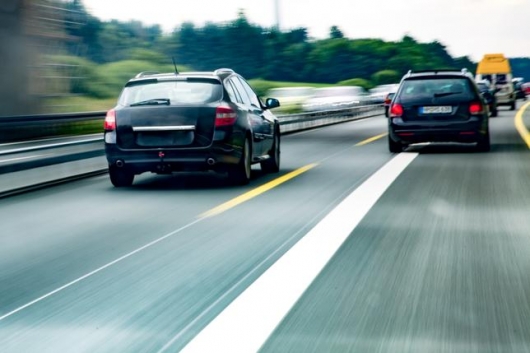
Tempany (cruise control) allow drivers to rest on the road. Cruise control is one of the greatest inventions of the automotive industry in the 20th century. Unfortunately, cruise control isn’t perfect. Including modern adaptive cruise control, which can not only automatically dial the preset speed, but to slow down the car in case of obstacles on the road.
How so? It has long been established that the motion-enabled cruise control saves fuel. Yes, it is. But only when driving long time on a free highway at a speed not over 100 km/hour.
If you turn on the cruise where on the road often traffic lights, junctions or traffic jams, even adaptive cruise control will not save you fuel.
Accordingly, the cruise control can be enabled only if you move in a straight line on the free highway, where the entire path will not be obstructed.
7. Engine braking

Recently, Nissan has boasted that the new electric Leaf car, you can only control one pedal (when releasing the gas pedal the car starts to brake by the electric motor). But did you know that in a similar way you can try to brake in a normal car?
To do this, try to reduce speed before the traffic lights/crossroads in advance, releasing the accelerator pedal. If your machine is equipped with automatic transmission, if you release the gas pedal, the box will include a lower gear and the car starts to slow down engine. In a car with a manual transmission for the effect of engine braking you will have to switch a lower gear.
Also, releasing the gas pedal in advance, you are, in fact, reduce fuel consumption to a minimum. In modern machines, if you release the gas pedal when you are moving at speed (in gear), the computer controlling the engine, shuts off the fuel supply. This means nothing else than fuel economy.
8. Go out at night or early in the morning

In hypermiling also includes a request to initiate movements by time of day. Because of the time of day depends on how much you get to your destination. Naturally, at night or early in the morning to get somewhere much faster. This is especially true of those who live in the city.
Remember that the less cars on the road, the higher your average speed. Accordingly, you will not only quickly get to your destination, but also save fuel. So plan a departure time for the road. Try not to travel during the rush hour, squeezing through traffic jams.
If possible, better move your ride at night or early in the morning. Temperature is also important, do not forget it. Heat or morning frost lead to increased fuel consumption. Therefore during winter night rides in the freezing cold may be less favorable than in the daytime, when the frost is retreating a bit. In the summer it is better to go at night or early in the morning.
